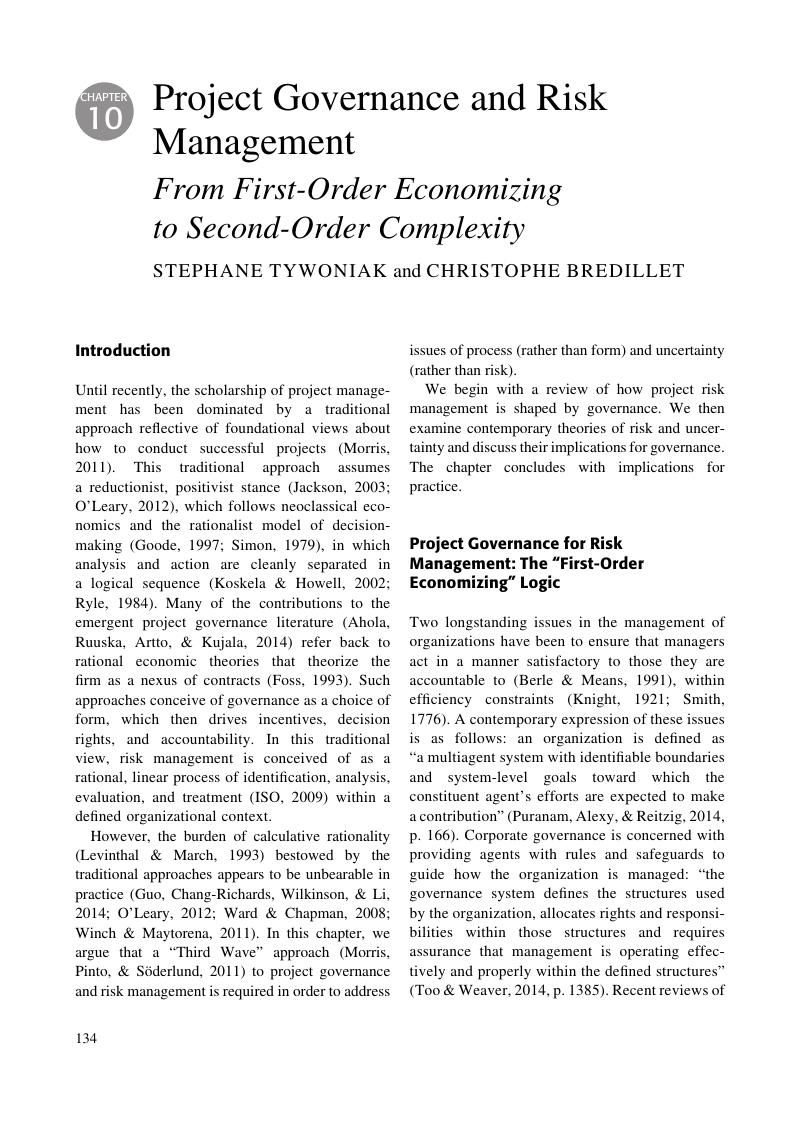Book contents
- Cambridge Handbook of Organizational Project Management
- Cambridge Handbook of Organizational Project Management
- Copyright page
- Contents
- Figures
- Tables
- Contributors
- Foreword
- Introduction
- Part I Strategy
- Part II Organizations
- Introduction to Part II
- Chapter 6 The Governance of Organizational Project Management
- Chapter 7 Project Portfolio Management
- Chapter 8 Program Management
- Chapter 9 Organizing for the Management of Projects
- Chapter 10 Project Governance and Risk Management
- Part III People
- Part IV New Directions
- Conclusions
- Index
- References
Chapter 10 - Project Governance and Risk Management
From First-Order Economizing to Second-Order Complexity
from Part II - Organizations
Published online by Cambridge University Press: 08 June 2017
- Cambridge Handbook of Organizational Project Management
- Cambridge Handbook of Organizational Project Management
- Copyright page
- Contents
- Figures
- Tables
- Contributors
- Foreword
- Introduction
- Part I Strategy
- Part II Organizations
- Introduction to Part II
- Chapter 6 The Governance of Organizational Project Management
- Chapter 7 Project Portfolio Management
- Chapter 8 Program Management
- Chapter 9 Organizing for the Management of Projects
- Chapter 10 Project Governance and Risk Management
- Part III People
- Part IV New Directions
- Conclusions
- Index
- References
Summary

- Type
- Chapter
- Information
- Cambridge Handbook of Organizational Project Management , pp. 134 - 148Publisher: Cambridge University PressPrint publication year: 2017
References
- 7
- Cited by



